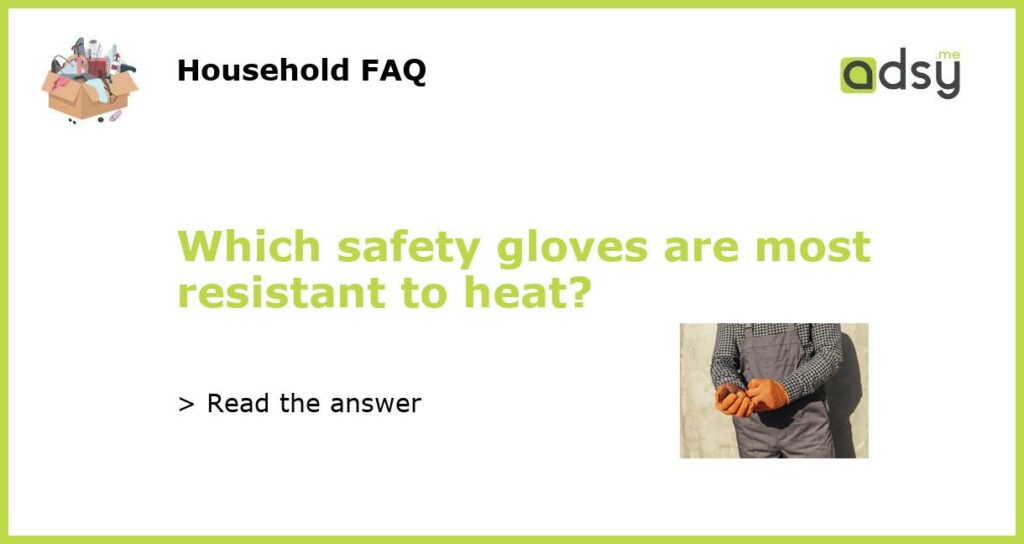Overview of Safety Gloves and Heat Resistance
When it comes to working with heat, safety gloves play a crucial role in protecting the hands and preventing injuries. Certain industries such as welding, metalworking, or food processing require gloves that are highly resistant to heat. In this article, we will explore the different types of safety gloves available and identify the most resistant gloves to heat.
Types of Safety Gloves
There are several types of safety gloves available in the market, each designed to provide protection for specific needs. Some of the commonly used types include:
- Leather Gloves: Made from different types of leather such as cowhide or goatskin, these gloves offer good heat resistance and durability. However, the level of heat resistance may vary depending on the thickness and quality of the leather.
- Aluminized Gloves: These gloves are made with aluminized fabric or a base of leather with aluminized coating. Aluminized gloves reflect radiant heat, providing high protection for workers in industries such as foundries, steel mills, or glass manufacturing.
- Heat-Resistant Fabric Gloves: These gloves are made from special fabrics that provide resistance to heat and flames. They are commonly used in industries where workers are exposed to high-temperature environments.
- Aramid Fiber Gloves: Aramid fibers such as Kevlar or Nomex are inherently heat-resistant materials. Gloves made from aramid fibers offer excellent protection against heat and flames.
- Latex Gloves: Although not specifically designed for heat resistance, latex gloves can provide some level of protection against heat and are commonly used in medical or laboratory settings.
Most Resistant Gloves to Heat
While all the types of gloves mentioned above offer some degree of heat resistance, the aluminized gloves and aramid fiber gloves are known for their exceptional heat resistance properties.
Aluminized gloves, as mentioned earlier, reflect radiant heat due to their aluminized coating. This makes them highly resistant to heat generated by welding arcs, molten metal, or radiant heat sources.
Aramid fiber gloves, on the other hand, provide both heat resistance and flame resistance due to their inherent properties. These gloves can withstand high temperatures and protect the hands from flames, making them ideal for applications involving extreme heat and fire exposure.
Factors to Consider when Choosing Heat-Resistant Gloves
When selecting heat-resistant gloves, it is important to consider various factors to ensure the right level of protection. Some key factors to keep in mind include:
- Temperature Range: Determine the maximum temperature the gloves will be exposed to and ensure that the gloves you choose offer resistance within that range.
- Level of Dexterity: Consider the tasks that need to be performed while wearing the gloves and choose gloves that provide the required level of dexterity without compromising safety.
- Comfort and Fit: The gloves should fit well and be comfortable to wear for extended periods. A good fit ensures proper protection and reduces the risk of accidents.
- Additional Features: Some gloves come with additional features such as cut resistance or impact protection. Assess the specific needs of your work environment and choose gloves with suitable additional features.
Conclusion
When it comes to heat resistance, aluminized gloves and aramid fiber gloves are considered the most resistant options available. However, it is essential to consider other factors such as temperature range, dexterity, comfort, and additional features when choosing the right safety gloves for specific needs. Prioritize employee safety by providing them with the appropriate safety gloves to protect their hands from heat-related hazards.






